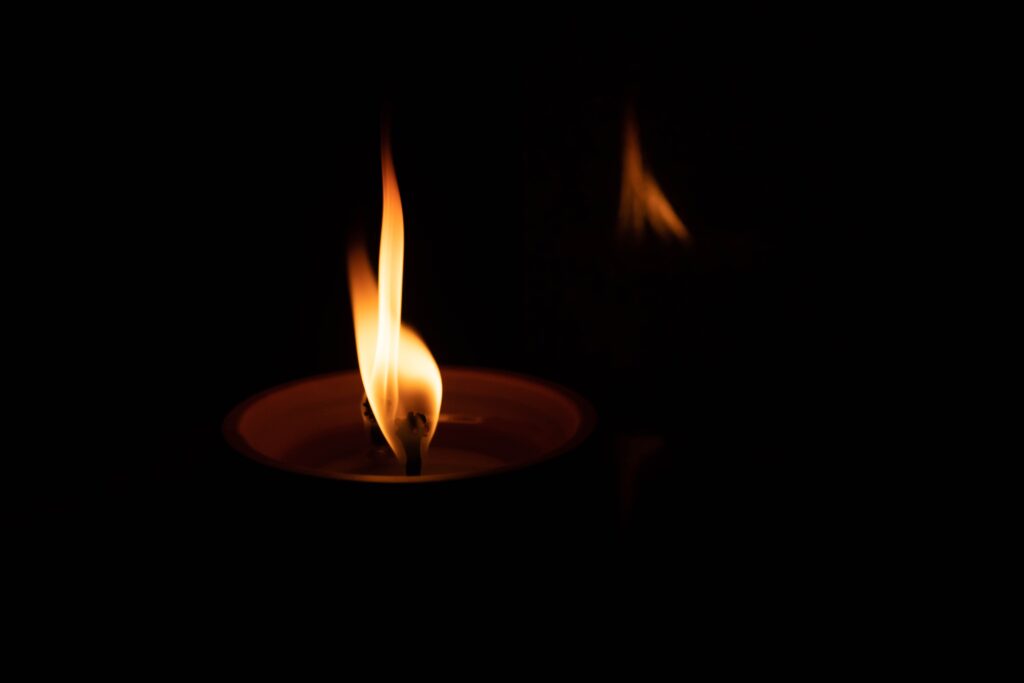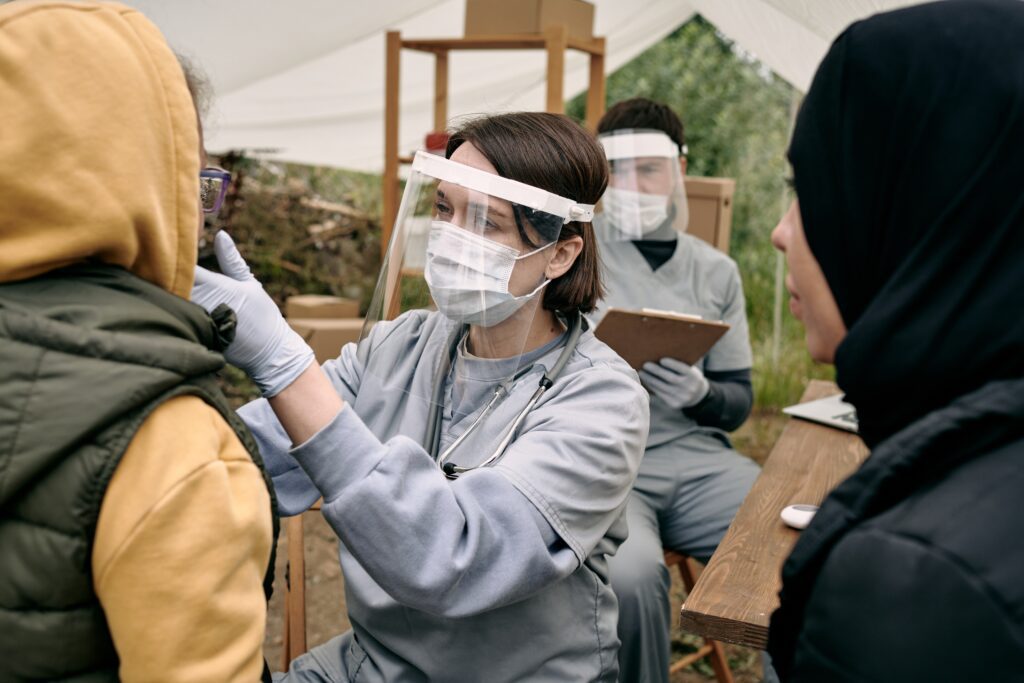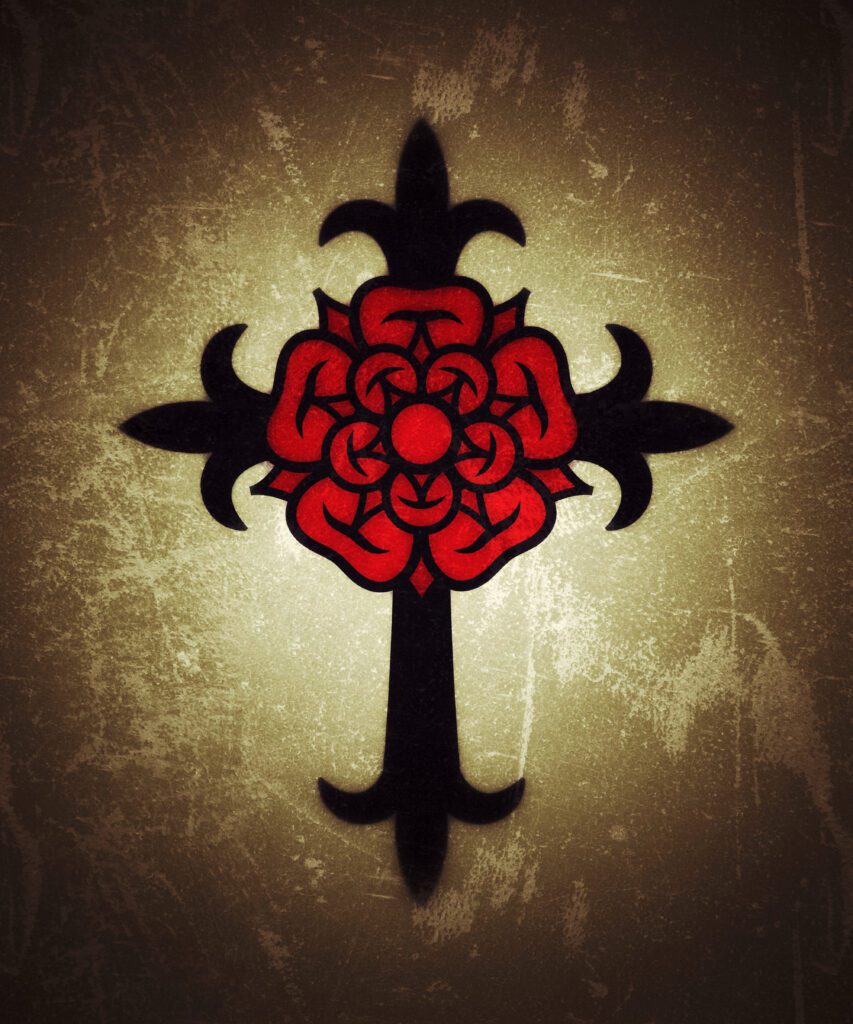
Our efforts become sacred through sacrifice
The word “sacrifice” comes from the same root as the word “sacred.” We could say, then, that sacrifice is the effort to make sacred the everyday efforts we make to care for the people we love, work for a better world, and alleviate pain in whatever ways we can.
When so much suffering is evident everyday in the world news, how can we possibly respond?
An ancient text gives us some insight: adapted in the 1940s by Santiago Bovisio, it is as relevant today as it was then. Remember that the world was engulfed in war at that time, and his message of the importance of finding all the ways to alleviate pain that we can rings true in our times as well.
What follows is an English translation of the original text.
From the course, “Sacrifice” by Santiago Bovisio:
Our desire to avoid suffering
As we read the titles of the teachings of this course, we may feel a bit uneasy. Our first concern, perhaps, will lead us to ask why it is necessary for us to make sacrifices when modern society offers us all the means to obtain well-being. Is it not better to live well, without suffering, without having to make sacrifices? We may think that suffering and sacrifice are things of the past.
But can we avoid sacrifice? And what’s more, would it be good to try to avoid it?
Suffering is inherent to life as we experience it. It is with us even in moments when we feel well and happy because we know that our happiness is short-lived and that no matter how long and healthy our lives may be, we will inevitably die. Besides, suffering is always present around us, and it hurts to see that.

Wherever we look we find lack of understanding, lack of resources, sickness, misery and afflictions of all kinds. We naturally tend to try to avoid the suffering that is likely or sure to come. Countering this tendency and facing the suffering that is inevitable, as this course suggests, lead us to renounce the illusion that by shutting our eyes to the pain of Life, we will be spared suffering.
Finding wisdom in ancient teachings
When we suffer pain, we react according to our attitude toward suffering. We can bitterly complain, feel that life is punishing us unjustly, accuse someone of being the cause of our suffering, or submissively withstand the pain. Another attitude is that of valuing the painful experience because we choose to suffer it in order to realize a noble goal. This last attitude toward suffering is what we currently understand as sacrifice. In order to reach this meaning, the idea of sacrifice underwent a great evolution.
Ritual sacrifice had a central role in ancient religions. There are many stories of sacrifice in both Western and Eastern religious traditions. Even though currently these forms of ritual sacrifice are no longer practiced, it is certain that the concept of sacrifice remains present in humanity. In one way or another, to sacrifice oneself for a noble cause or to gain divine favor continues to be an ethically desirable and appreciated behavior in society, even though today there is a general tendency in society toward self-centeredness and complacency.
Sacrifice, in its traditional sense, can be carried out in a personal and private way in acts in daily life or can be a part of liturgical ceremonies. Some religions, besides the practice of individual and private sacrifices, have ritual sacrifices; for example, fasting, pilgrimages and ceremonies of the Eucharist.
Here we expand the idea of sacrifice by placing it in the greater context of human experience as it manifests in each instant.
In reality, this expansion of the meaning of sacrifice corresponds to the Latin root of the word: sacer+facere; that is to say, to make sacred what we do and experience. When we speak of pain in this context, we speak of pain that, given our current human condition, we cannot avoid.
We understand sacrifice as the ability to keep ourselves conscious of our human condition of being unable to avoid pain, whether we experience it personally or not.
All life is sacred
Sacrifice occurs when we transform this pain into a means that drives our unfolding, promotes our participation, and unfolds a relationship with ourselves and others that is ever more harmonious.
Instead of waiting either for good fortune to free us from suffering or for destiny to make us suffer, we resolutely establish a positive and permanent relationship with the aspects of life that cause us pain and that we cannot avoid.
This relationship helps us to understand that our life is a unity, in which we cannot separate the distressing from the happy experiences. Happiness and sorrow are an indivisible pair in our own becoming. When, for example, we feel great happiness at the birth of our children and in seeing them grow and mature, we also know how much effort it will take to provide for their needs and how much we will suffer from the trials that they will have to go through in their lives.
Everything is connected to everything else
On the other hand, let’s take into account the mere fact of staying alive, of having to overcome inertia in order to go ahead, of overcoming adversities, of obtaining what is necessary to live, of fulfilling our responsibilities, of responding to those who depend on us and to the society that protects us: all demand the sacrifice of time, affections, goods, and preferences.
We can call this “the sacrifice of living.”
Certainly, we do not consider it a sacrifice to strive to stay alive. Yet, we realize that every effort we make requires us to renounce. We give up things that we wish we could have or do. We also know that when we accomplish what we set out to do, we feel fulfillment. We do not consider the renouncements we had to make or the pain we had to suffer too costly. Rather, we feel they are true achievements that will benefit others as well as our own advancement and the expansion of our consciousness.
Every moment is sacred
Being able to combine the sacrifice of living with the joy of living, we harmonize our relationship with life as it presents itself to us through time. In this way, each instant acquires its unique, full and sacred character.
THE MYSTERIES OF SACRIFICE

“The universe is so vast and so ageless that the life of human beings can only be justified by the measure of their sacrifice.”
V. A. Rosewarne (1916-1940), British Pilot; last letter to his mother.
Inscription in the portrait of “Young Pilot” in the museum of the Royal Air Force.
Suffering is always present in our lives in spite of all the advances of civilization that make existence more bearable.
“The human being’s life upon earth is struggle and pain.” Still true today, two thousand years after Paul the apostle first said it.
Western religions, particularly Christianity, have exalted the concept of pain to make it more bearable. On the other hand, certain Eastern philosophies have said that pain is an illusion, a mental mirage. However, neither the exaltation nor the denial of pain has conquered it; pain remains present in the world.
Ancient rites encouraged devotees to bear the woes of life through vocal prayer and mantras. The Sannyâsîs of India wear necklaces around their necks made with fruit seeds with which they count their prayers. Christians have a similar practice, the recitation of their rosary. Each one of those seeds or beads symbolizes an aspect of the pain that we suffer.
How should we respond to suffering?
What should we do in the face of pain? Should we resign ourselves to it or deny it? What is the meaning of sacrifice in relation to pain?
Generally speaking, sacrifice is an offering when we embrace pain out of love of God and beg for His assistance. This traditional view of sacrifice is when we choose to suffer a mortification that we could avoid. It also could be expressed as offering our lives with an altruistic intention.
Here we give another meaning to sacrifice
Sacrifice is the attitude of recognizing pain as an undeniable and unavoidable fact of our existence. We can then transform pain into a means that drives us to participate in life as it is. This point of view expands the sense of offering and abnegation that was once given to sacrifice. We now see it directly related with the concept of spiritual unfolding.
Ancient wisdom tells us: “Overcome pain by submerging yourself in it.”
That is, we neither ignore the pain that is present in the world nor reject the pains we cannot avoid.
Sacrifice is an attitude; that is to say, our relationship with life in its painful aspects. It becomes basic to our relationship with the whole of life.
We continue to strive to alleviate suffering. And in this striving, we embrace effort and pain completely, with serenity. This attitude enables us to know not only pain but ourselves. It helps us see our habitual reactions to what makes us suffer.
The way we relate to pain takes on different hues according to our unfolding and our circumstances.
Facing pain is not easy
Why is facing and embracing the pain we cannot avoid called sacrifice? Because it requires of us a difficult decision: not to deny the pain inherent to living. It takes courage not to deny the pain of life. To recognize and embrace them totally enables us to expand our consciousness and to know ourselves.
We cannot separate from life the parts we do not like. Nor can we separate our notion of being from the vicissitudes of being alive. Thus, facing life in its totality means to face who we are in our totality. Thus practice of sacrifice clears the road to self knowledge. It alleviates the pains we cannot avoid with the balm of understanding.

Sacrifice requires love
Sacrifice transforms even deprivations, illnesses, and the most intense confusion into mild nectar. It transforms our sufferings into serenity and participation. In this way we overcome pain. The Rosicrucians’ cross with a rose in its center symbolize that transformation. The acceptance of pain transforms us; a marvelous flower blooms among the thorns.
The different aspects of sacrifice can be represented as a mental rosary divided into fifteen mysteries. We call them mysteries because the source and reason for pain are a mystery to our minds. Nevertheless, sacrifice enables us to unveil the mystery and know pain by embracing it. This is like a glimpse into eternity.
*
Would you like to read more?
The full course Sacrifice first written in Spanish in the 1940s by Santiago Bovisio, is available in English on request. Contact us here.
About the Author(s)
Longtime teacher, now trying my hand at writing. Especially dedicated to people's real-life experiences.
Editor of collection of bilingual poetry, published by Cafh Foundation: Landscape of the Soul: Poems of Community and Hope by Hipólito Sánchez.
Translator of Living Consciously and Words Matter, by Jorge Waxemberg.





